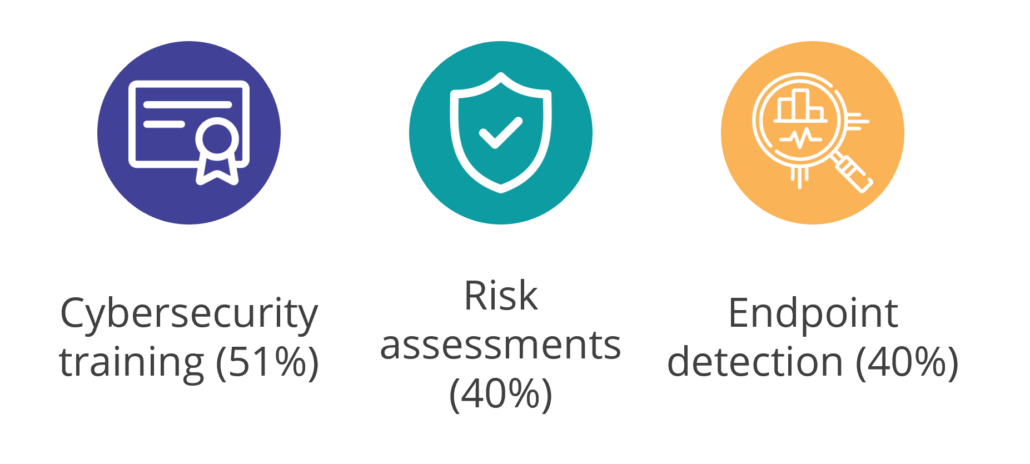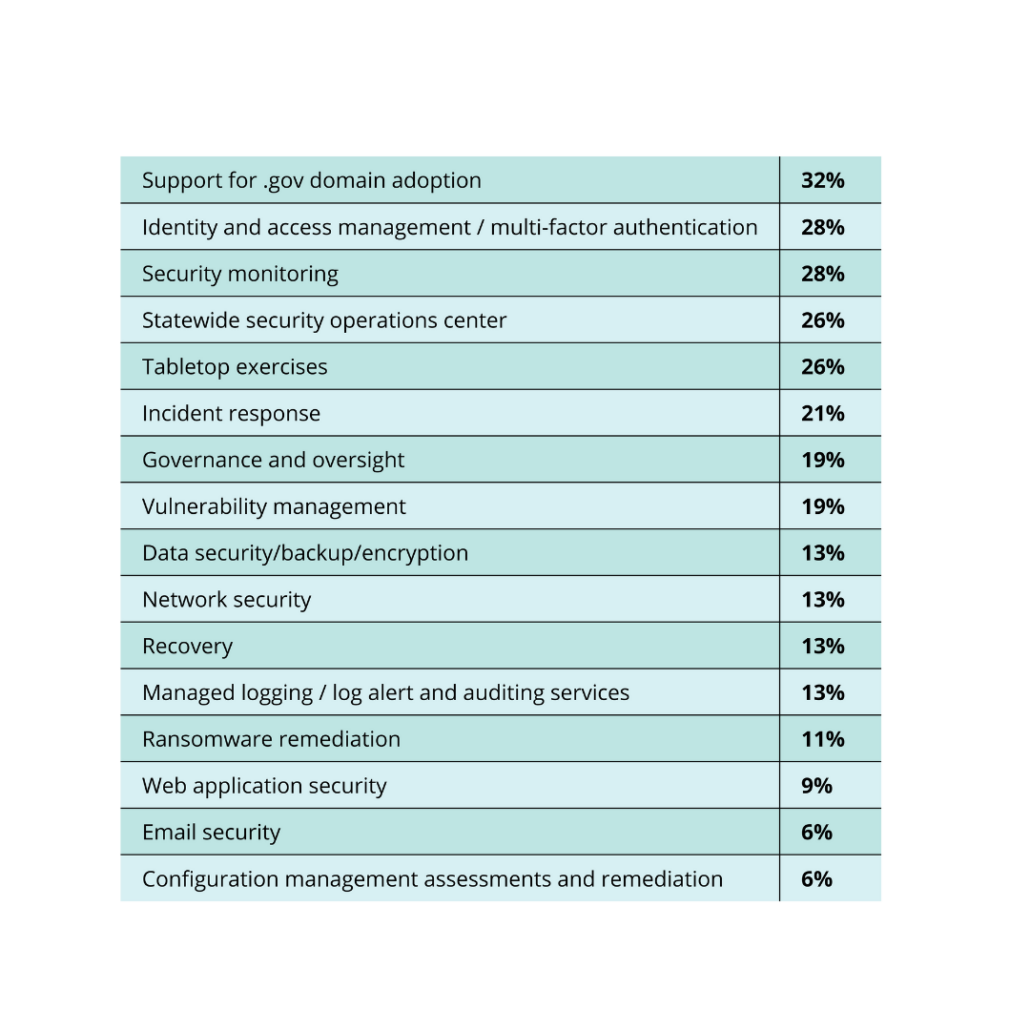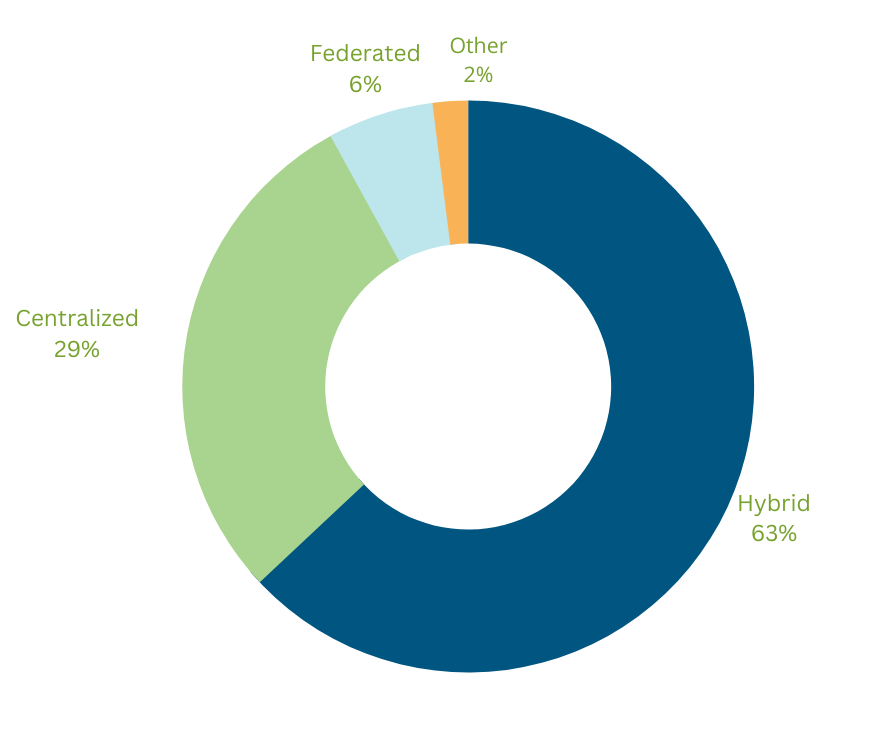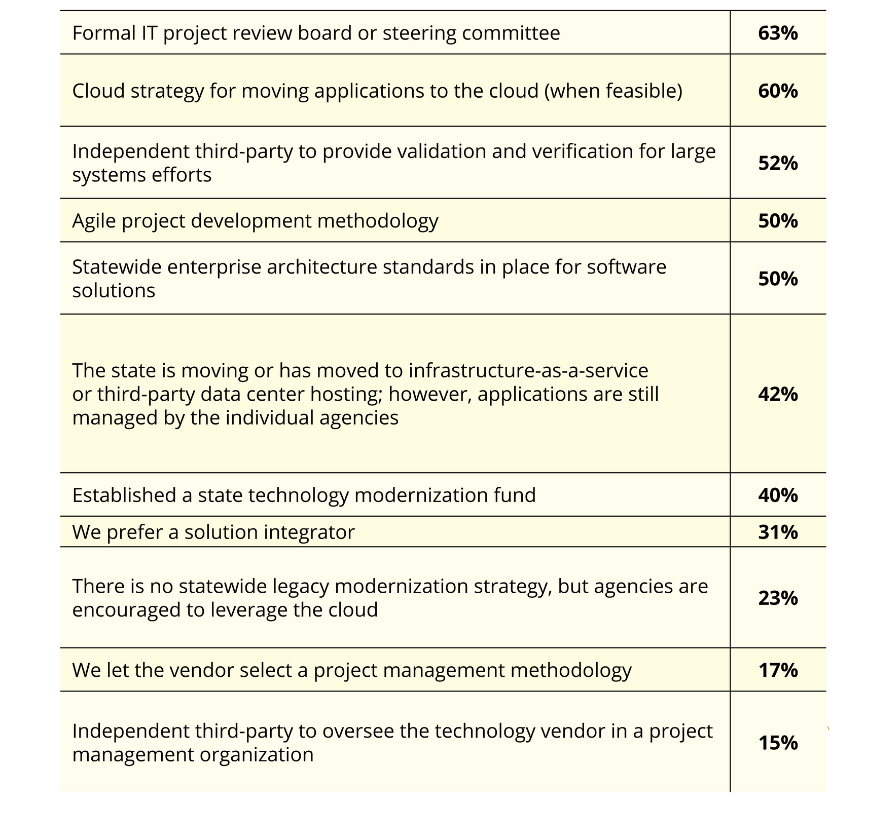Table of Contents
Executive Summary | Financial Models | Cybersecurity | Federal Funding | Emerging Technology | Cloud Services | Legacy Modernization | Data Management | Future Role of the CIO Organization | Conclusion
Executive Summary
Welcome to the 2023 State Chief Information Officer (CIO) Survey, we’re glad you’re here. We conducted the survey in the summer of 2023 and had 49 state CIO responses to 47 questions on eight topics. As always, our state CIOs provided us with a cache of insightful information. We wanted to know less about plans and aspirations and more about actions and what is happening today. But we still left room for state CIOs to prognosticate on the future of the CIO organization and CIO role. Here’s a preview: if there’s anyone out there who still doubts that being a good communicator is more important than being a technical expert, please read on.
But before we dig into those questions, we want to share some demographic information. One quarter of state CIO offices have 101 to 299 employees; 22 percent have 1000 or more; and another 22 percent have 300 to 499. The majority of CIOs reported that about 20 percent of their staff are contractors. From this data we can’t really say that there have been dramatic shifts overall and that the number of CIO office staff is way up or way down. We can, however, hypothesize that the fluctuations can be attributed to continued consolidation in states and decreased staffing during the pandemic. Finally, on the topic of CIO delivery strategies, we asked how CIO offices will serve customer agencies in the next three years and 49 percent said they would increase information technology (IT) employees in the state (state employees).
We also asked about the CIO organization budget which is $271 million on average. That of course includes the very large states so the median budget—$132 million—paints a more accurate picture of the typical CIO organization budget.
Our survey topics this year include some stalwarts like cybersecurity, emerging technology, cloud services, legacy modernization and data management and also includes some new(ish) topics. We say new “ish” because we might have covered the topics before, but we tried to put a new spin on the questions asked. For example, we asked about CIO financial models because there has been a lot of discussion among state CIOs lately about the optimal model— chargeback, general funds, assessment or hybrid—and we wanted to get a sense of how things are and how CIOs think they should be. It’s no surprise that most states have a substantial chargeback component to their financial model. But many CIOs are working towards obtaining some general funds to be able to tackle modernization, innovation and other projects.
Finally, you’ll notice that we didn’t include a singular section on workforce but sprinkled workforce questions throughout the survey. Workforce challenges continue to be on the top of mind of every state CIO. States’ ability to deliver services currently and in the future is heavily dependent on getting the right people with the right skills and the right number of those folks.



























